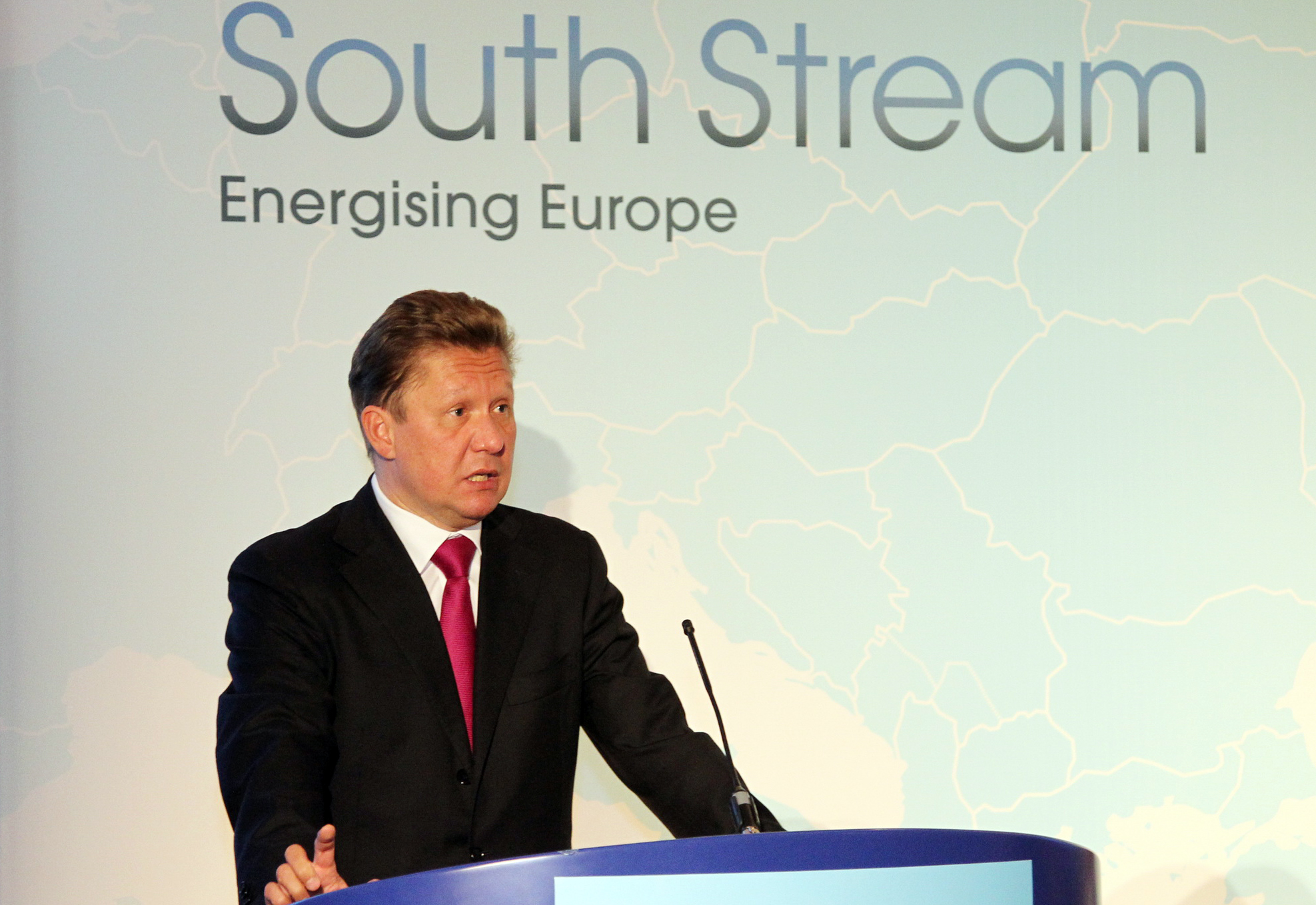
Putin and Gazprom Juggle South Stream Project Options after Turkish Approval
Publication: Eurasia Daily Monitor Volume: 9 Issue: 5
By:

Moscow has confirmed that Turkey will allow Gazprom’s South Stream pipeline to be built through Turkey’s Black Sea exclusive economic zone, en route to central Europe (“Turkey Gains Little, Ukraine Has Much to Lose in Turkish OK to Russian South Stream,” EDM, January 9). Beyond threatening Ukraine’s transit system with bankruptcy and takeover, Moscow seeks to persuade European countries along the proposed South Stream routes that Russia is poised to proceed with construction.
Live on TV on December 30, Russian Prime Minister Vladimir Putin ordered Gazprom to start construction work on the pipeline from Russia to Bulgaria, via Turkey’s Black Sea zone, in “late 2012.” Declaratively at least, South Stream is designed for an ultimate capacity of 63 billion cubic meters (bcm) of gas annually, to be reached in four consecutive stages of some 15 bcm annually each. The stages correspond to four parallel pipeline strings, to be laid on the seabed of the Black Sea (the four may well be reduced to one, however, if Russia takes over Ukraine’s transit pipelines). Moscow aims to build South Stream’s first stage and send the first gas flow by late 2015 (Russian TV, Interfax, December 30; Russian prime minister’s website, December 31).
That completion target is less significant or credible, however, than the starting date of construction. Putin’s televised orders changed this, from 2013 to late 2012. The undeclared intention is to pre-empt the full entry into force of the EU’s Third Energy Package legislation in March 2013. Russia will claim that South Stream on EU territory (if only in Bulgaria) pre-dates this EU legislation, and should therefore not be subject to its jurisdiction. Moscow would like to make Bulgaria complicit in this ruse against the EU.
Putin and Gazprom’s CEO, Aleksei Miller, outlined a re-configured version of South Stream in their December 30 joint appearance. The Bulgaria-Greece-southern Italy trunkline has now been dropped. Nevertheless, the total declared gas offer remains unchanged at 63 bcm per year. Instead of bifurcating in Bulgaria, a single trunkline would continue to Serbia, Hungary, Slovenia, and northern Italy. From that main line, branch-offs are planned to reach into Bosnia’s Serb entity, Croatia, and Austria. A branch line from Bulgaria to Macedonia is under consideration; but Bulgaria has lost a much larger transit opportunity with Gazprom’s scrapping of the Bulgaria-Greece-Italy line.
The reconfiguration turns Austria into an ordinary importer country (undoubtedly for lower gas volumes), without the advantages of a transit country and distribution center as originally planned. This change follows the European Commission’s decision to invalidate Austrian OMV’s sale to Gazprom of a 50 percent stake in the Baumgarten distribution center. Gazprom lost interest after losing part-ownership in that major continental hub (Interfax, December 28).
From 2009 to date, Moscow has never identified gas sources (whether in Russia or elsewhere) for anything near the declared offer of 63 bcm per year. The Kremlin had earlier counted on third-party gas, from Turkmenistan or a gas producers’ cartel, for the South Stream project. Russia’s own production remains flat since the pre-crisis years, with no major new field development (except in the Far East) since Soviet times.
Moscow now estimates South Stream’s costs at 16.5 billion Euros ($21 billion) overall. This includes 10 billion Euros ($12.7 billion) for the 920 kilometer underwater pipeline (the four strings) in the Black Sea; and at least 6.5 billion Euros ($8.2 billion) for some 2,100 kilometers of overland pipelines (without the additional branch-offs under consideration) (Interfax, December 30).
Those exorbitant investment costs would inevitably be passed on to consumers through correspondingly high prices for gas. Gazprom would not have to face those consumers directly, if the project materializes even partially. In that case, the governments and national gas companies would have to inflict those prices on their own countries, and face themselves the consumers.
As planned, South Stream’s seabed pipeline is shorter but more expensive than the Nord Stream One pipeline on the Baltic seabed. That Baltic line, completed in November 2011, runs 1,220 kilometers; and it has cost some 9 billion Euros ($11.4 billion) to build, rather than the 6 billion Euros ($7.6 billion) declared at the start in 2006. In light of that experience, cost overruns on South Stream must be anticipated, and the 10 billion Euros ($12.7 billion) initial estimate questioned accordingly. While Nord Stream runs on the shallow Baltic seabed, South Stream is planned to run on the deep to ultra-deep seabed of Turkey’s Black Sea zone, involving higher costs for materials and construction.
Moscow proposes to divide South Stream’s construction costs, offshore and onshore, among a multiplicity of shareholders. Gazprom, however, retains control of design, construction and future operation on each section; as well as commercial control of the overall project as its sole supplier with gas. For the underwater pipeline with its high costs and risks, Gazprom has formed an international consortium in which it holds 50 percent of the shares; Italian ENI, 20 percent; and German BASF (Wintershall’s parent) and Electricite de France, 20 percent each. The overland sections are planned as bilateral, parity joint ventures of Gazprom with each individual country.
However, Moscow is playing off its would-be European customers and Ukraine against each other. Putin demonstratively instructed Miller (see above) to keep Ukraine in the transit business as Russia’s long-term strategic partner. Separately but in the same vein, Miller declared that “South Stream’s ultimate capacity would depend on Ukraine” – i.e., on Ukraine’s decision to yield its pipelines to Gazprom (Interfax, December 29, 30). Thus, European countries in South Stream may get no new gas, or only a trickle of it, and no new pipeline or storage on their territories, in the event that Gazprom takes over Ukraine’s transit pipelines and continues using them at nearly the present throughput levels.
South Stream should not be seen as a supply project. Its foremost goal is to stop and roll back the implementation of the EU’s Third Legislative Package on the European energy market. That anti-monopoly legislation requires separation (“unbundling”) of gas production and sales from transportation and storage. As such, it bars a vertically integrated monopoly such as Gazprom from holding ownership stakes in pipelines and storage sites on EU territory. South Stream, however, clashes head-on with that EU legislation. Through this project, Gazprom would obtain co-ownership of pipelines in a number of EU member countries where it currently holds no such assets. This could nullify the EU’s third-package legislation.
The legal precedent would enable Gazprom to protect its vertically integrated assets in other EU countries, including Germany and the Baltic States. The Kremlin would cite South Stream arguing that EU member countries may override EU legislation on their territories in partnership with Gazprom.




